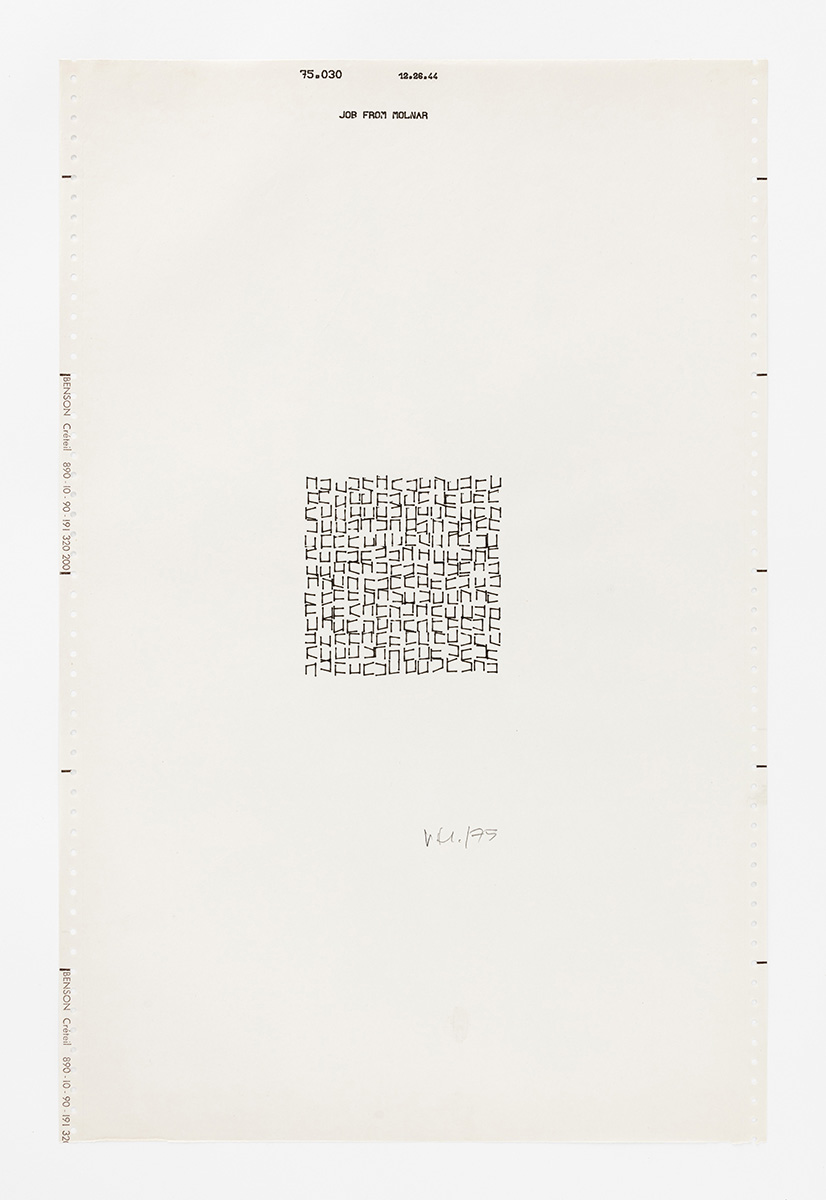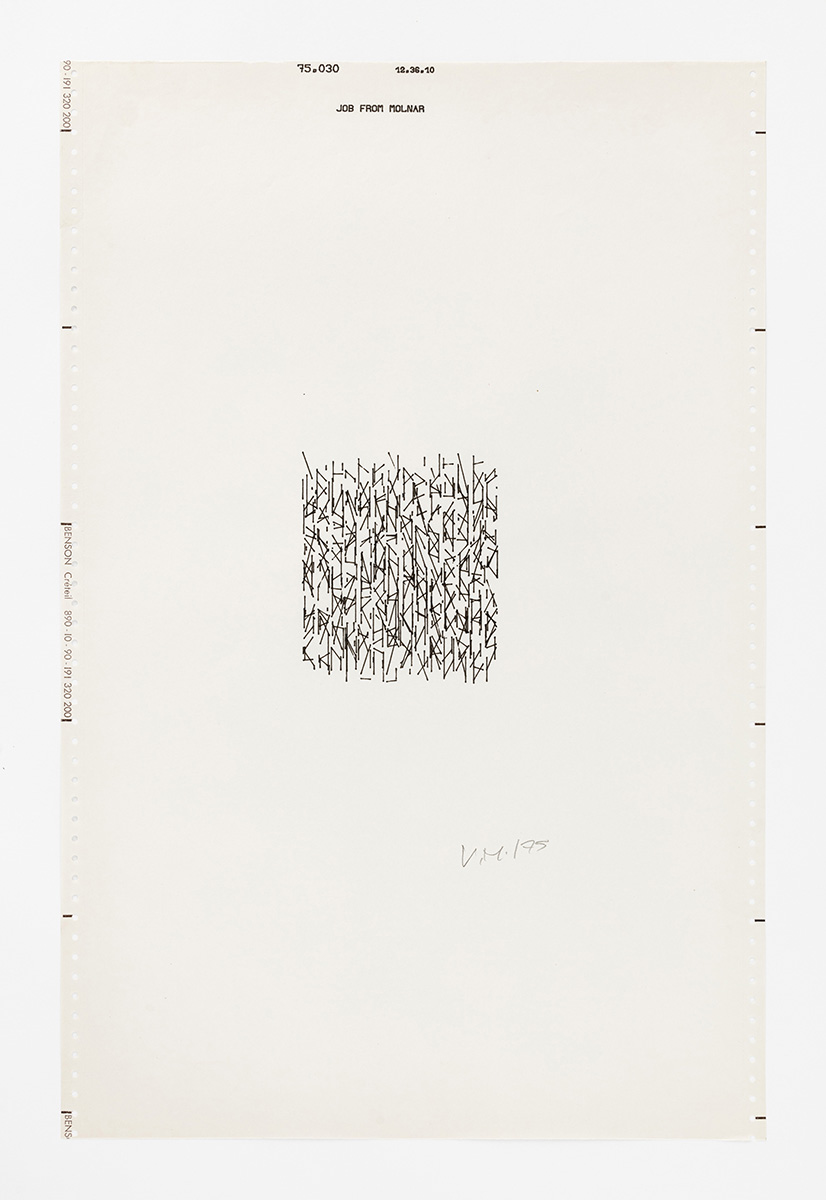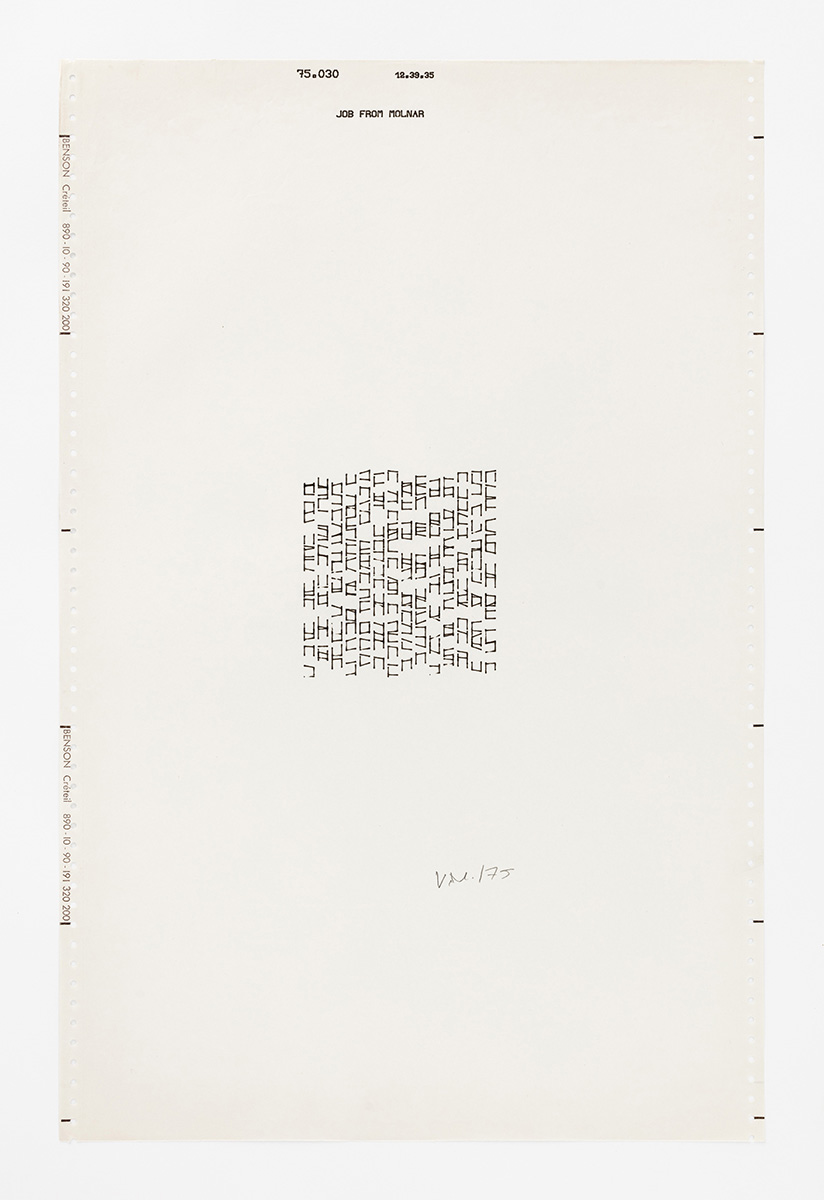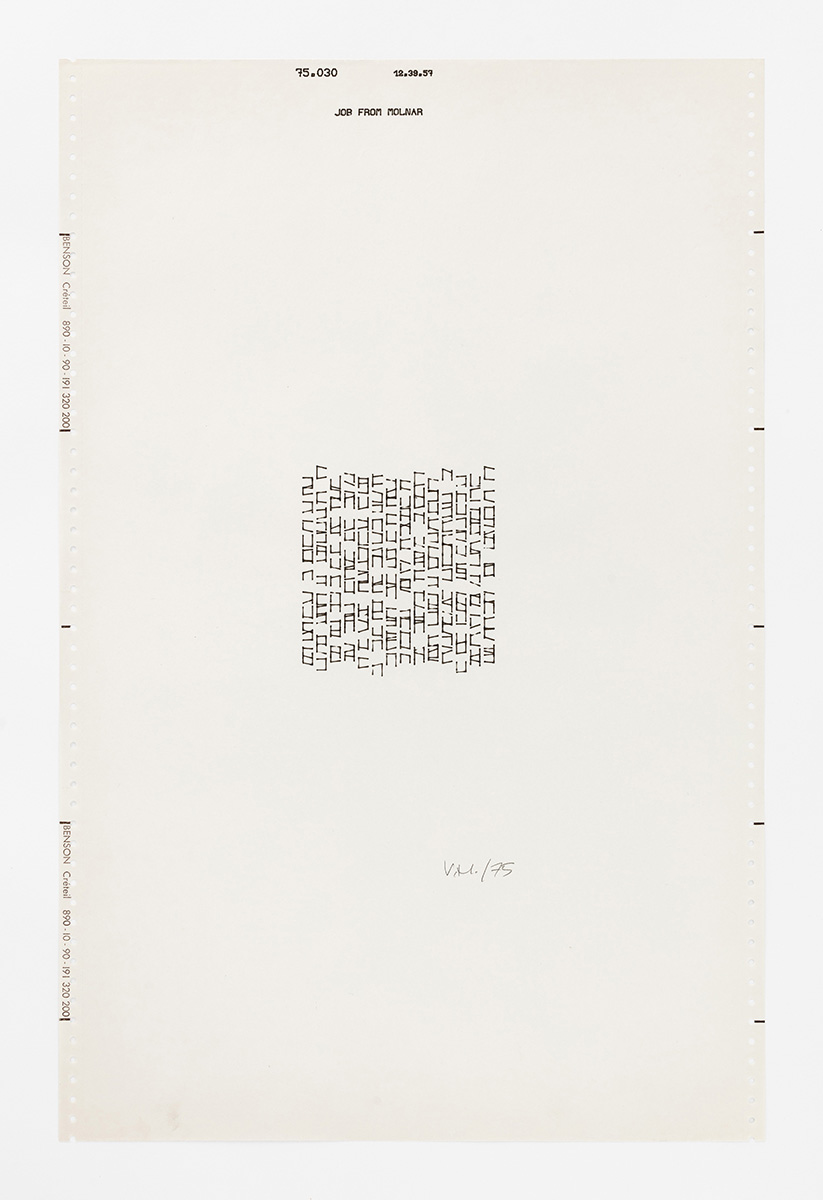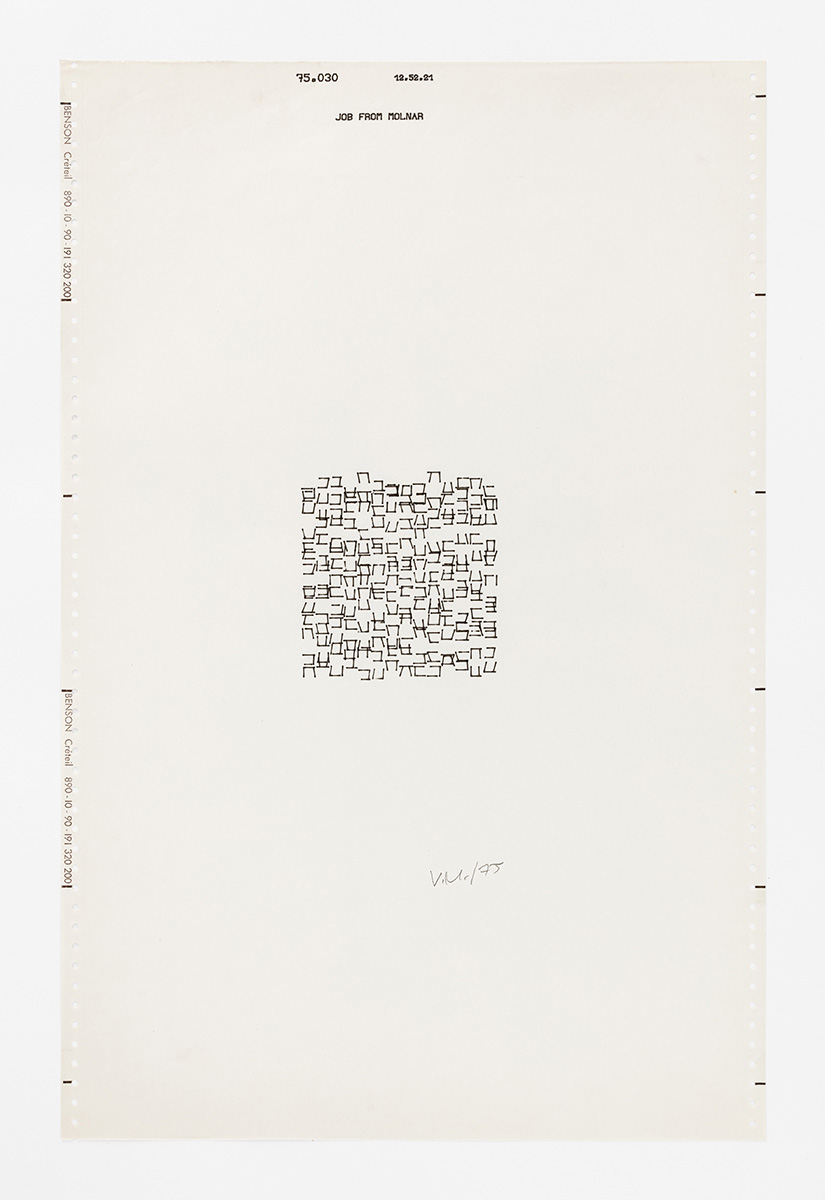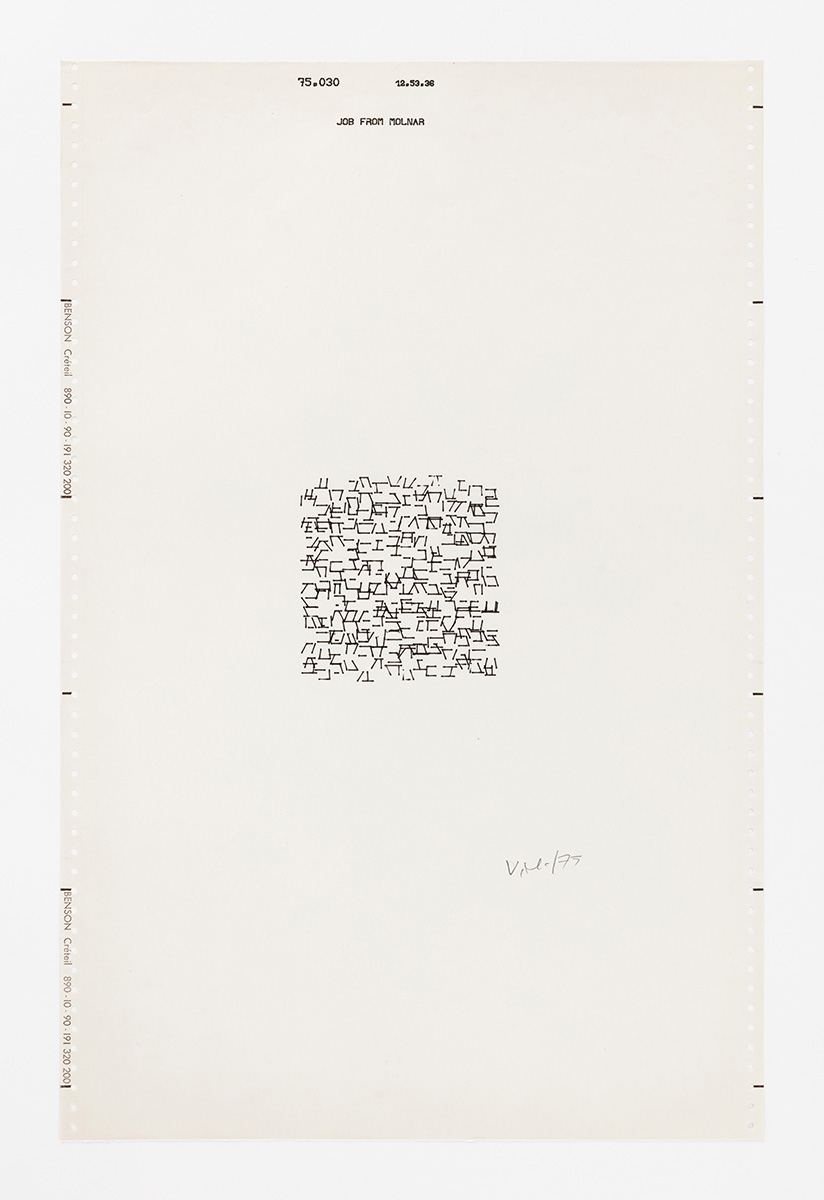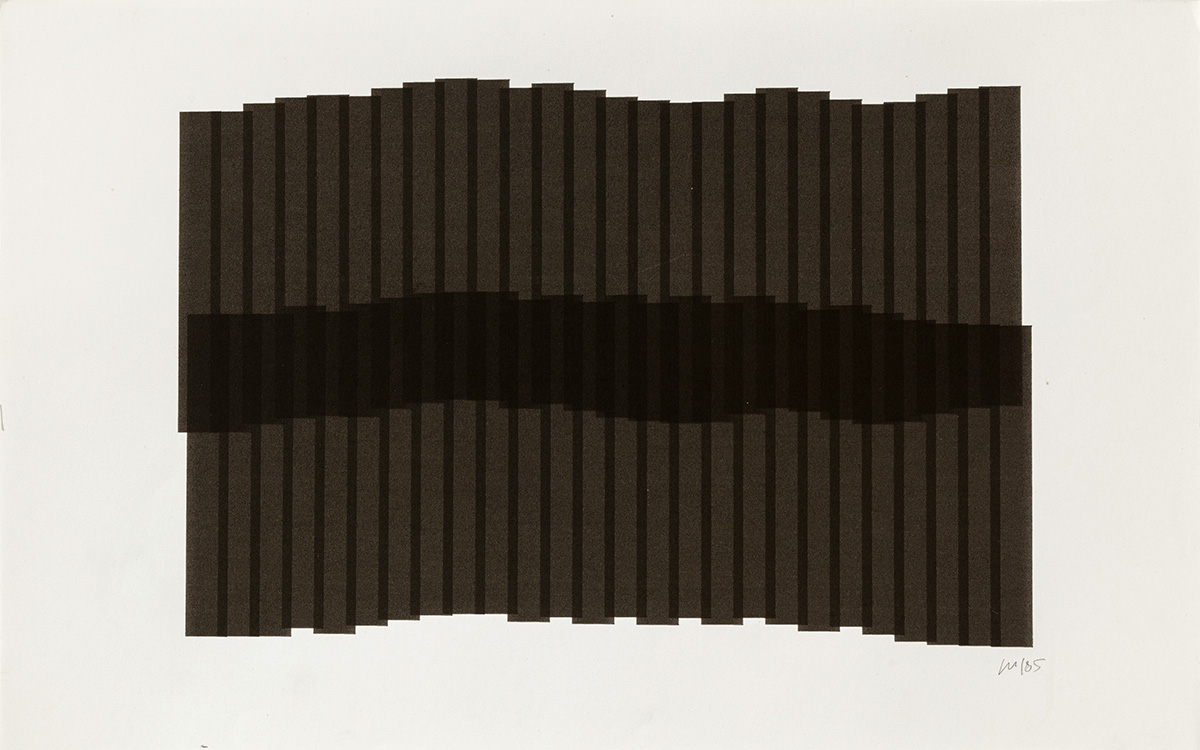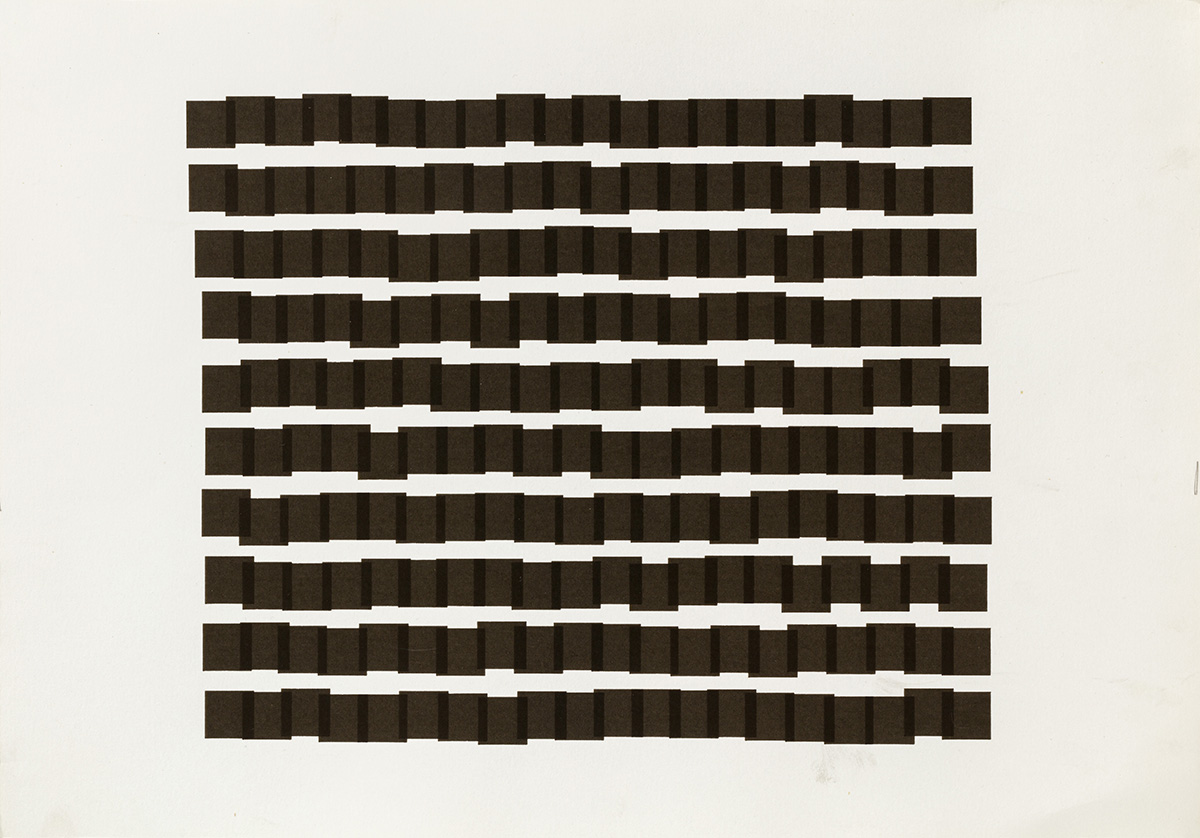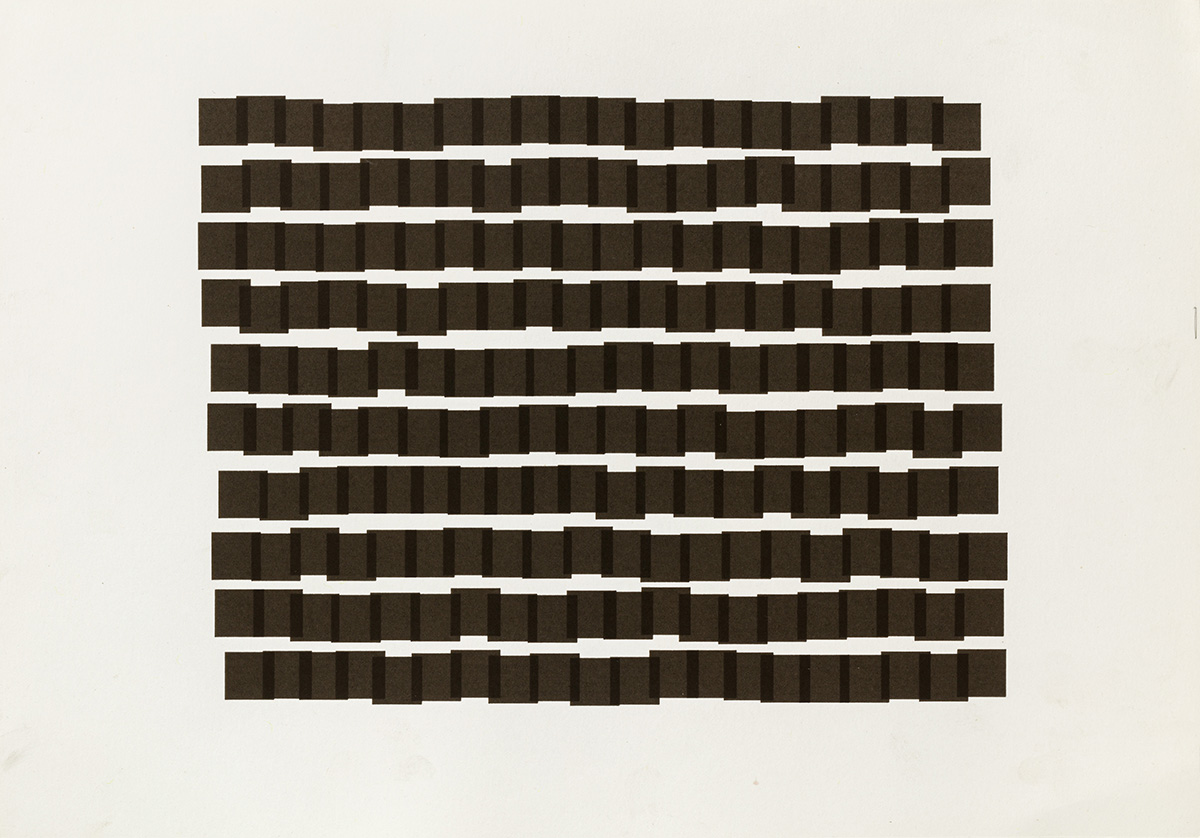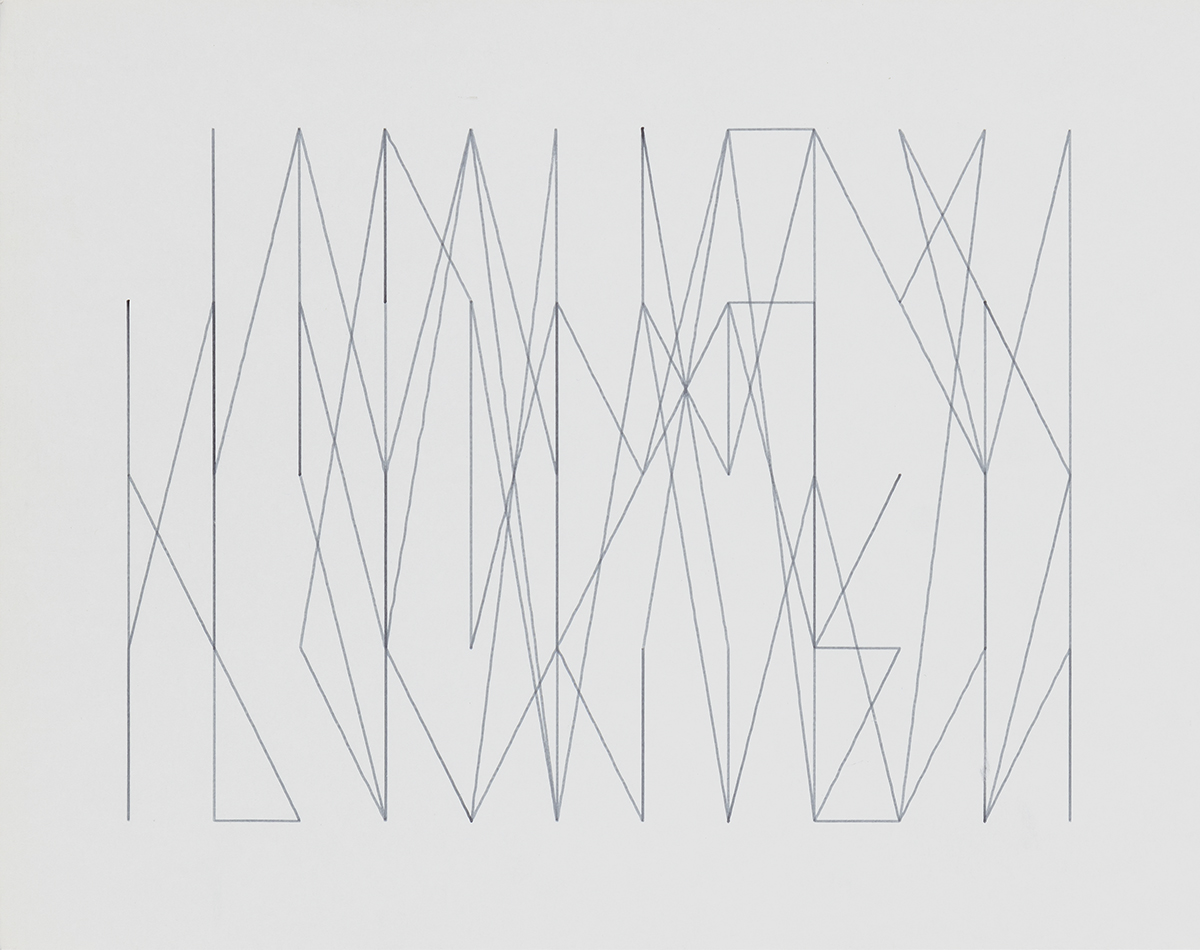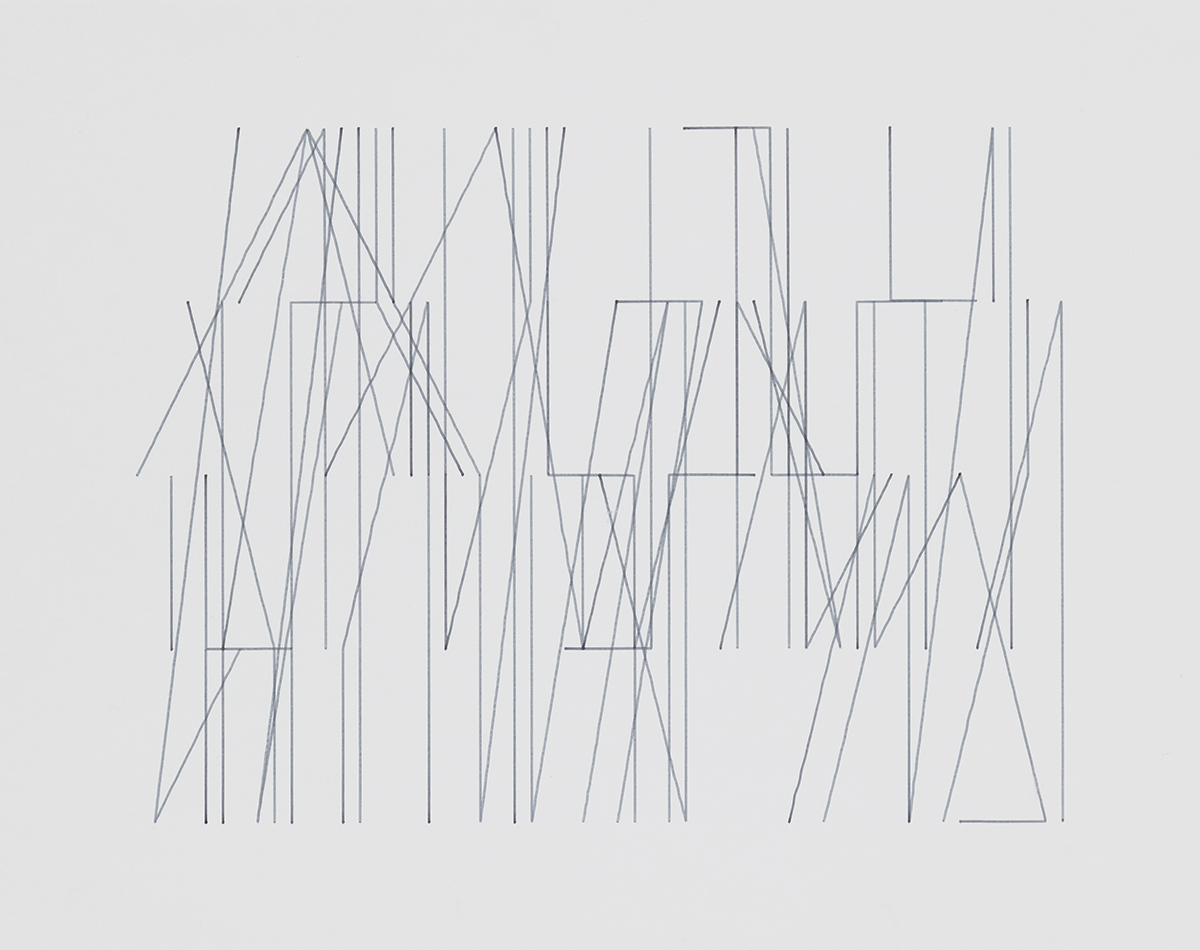Vera Molnar: JOB FROM MOLNAR
13 february – 22 march 2024
Vera Molnar (1924-2023) is regarded as one of the world’s foremost pioneers of computer art. Molnar graduated from the Hungarian Academy of Fine Arts in Budapest in 1947. That same year she moved to Paris, where she met Fernand Léger, Sonia Delaunay and François Morellet, among others. During the 1950s, her mode of artistic expression had strong ties to the constructivist tradition. In 1960, she founded the Groupe de Recherche d’art Visuel (GRAV) and participated in the exhibition entitled Konkrete Kunst [Concrete Art] (Helmhaus, Zurich), curated by Max Bill. During the ’60s, Molnar came into contact with contemporary composers Pierre Barbaud and Michel Philippot, with whose musical experiments her systematic thinking at this time showed many parallels. It was also from Philippot that Molnar borrowed the term “machine imaginaire”. Following the method of the imaginary machine, she initially drew her simple algorithm-based sequences freehand, from one step to the next. As of 1968, she was among the first to create art with an actual computer, at the computer centre of the Sorbonne University in Paris. The university’s computer and plotter were also used to create the majority of her plotter drawings from the 1970s. In some instances, in her printed drawing series, on the edge of the paper perforated at the margins, the brand of the plotter (BENSON) and Molnar’s distinctive printed “signature” (“JOB FROM MOLNAR”) are also visible.
Molnar used computer science as a generative tool in her art for creating paintings and graphic works. She programmed the computer to create specific geometric shapes and forms, which could be varied and combined in fixed or random ways. Between 1974 and 1976, together with her husband and perception researcher François Molnar, they developed their Molnart software, which offered a new method for using computers to create art, and which she employed not only for her plotter drawings but her painting series as well. Seriality is a fundamental characteristic of Molnar’s art, allowing for following the transformation of the initial forms of the series from one step to the next. She created her artwork series by making small changes with respect to the basic elements – adding “1% disorder”, to use the artist’s words. In her works, the computer’s algorithmic randomness played a key role. Order and disorder, structure and freedom were important concepts of Molnar’s artistic approach, and it was the boundaries between these that she explored in her art. Her oeuvre continues to exert a significant influence over the development of digital art even today. One of her last groundbreaking works, entitled Themes and Variations and created in collaboration with generative artist Martin Grasser, is a collection consisting of 500 generative art NFTs (Non-Fungible Tokens).
Vera Molnar’s first solo exhibition, Transformations, was held at the London Polytechnic in 1976. Her first artist’s book, Ein Prozent Unordnung [One Percent Disorder], was published in 1980 (Wedgepress & Cheese, Bjerred). Her works have been showcased at solo exhibitions both in Hungary (e.g. Lines, Forms, Colours, Vasarely Museum, Budapest, 1990; One Percent Disorder, Kepes Institute, Eger, 2012; Vera Molnar, Art Gallery Paks, 2007-2008; Disorder in Order, Kiscell Museum – Municipal Gallery, Budapest, 2019; Vera Molnar 99 – Rhythms and Algorhythms, Modern Hungarian Gallery (MoMű), Balatonfüred, 2023; À la recherche de Vera Molnar, Ludwig Museum – Museum of Contemporary Art, Budapest, 2024) and abroad (e.g. (Un)Ordnung, Museum Haus Konstruktiv, Zürich, 2015; Pomenadesencarré, Museum Ritter, Waldenbuch, 2020). Molnar’s works have also been exhibited in numerous group shows (e.g. Elles, Centre Georges Pompidou, Paris, 2009; Ein Quadrat ist ein Quadrat ist ein Quadrat, Museum Ritter, Waldenbuch, 2015; Thinking Machines: Art and Design in the Computer Age, 1959–1989, MoMA, New York, 2017)
In 2024, a comprehensive exhibition will open with the title Vera Molnar – Parler à l’œil at the Centre Pompidou in Paris. Her works are included in the collections of the Bibliothèque Nationale (Paris), the Centre Pompidou (Paris), Forum Konkrete Kunst (Erfurt), the Hungarian National Gallery – Museum of Fine Arts (Budapest), MoMA (New York), Museum Ritter (Waldenbuch), the Victoria and Albert Museum (London) and Tate Modern (London).
Mónika Kumin, Zsófia Rátkai












